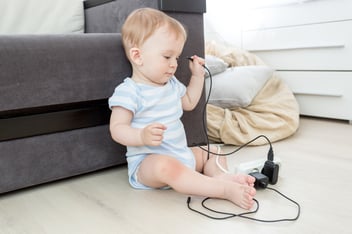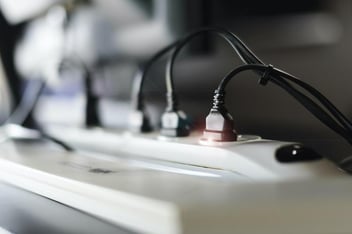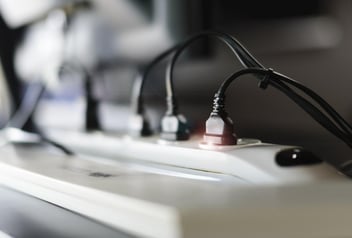For many pet owners, their furry companions are more than just animals, they're members of the family. That’s why it’s important to take steps to ensure their safety and well-being, including protecting them from electrical hazards in the home. From cords and wires to electrical outlets, there are several potential dangers that can pose a threat to pets. We’ve rounded up some of the most common electrical hazards your pet may encounter in your home and provided tips to help keep your animals safe.
1) Keep Cords and Electrical Wires Out of Reach of Pets
Pets often chew on wires and cords, which sometimes can result in electrical shock. Make sure all cords and wires are hidden or out of reach.
2) Cover Electrical Outlets
Our furry friends can get quite curious about electrical outlets, which are another potential risk for electrical shock. Help prevent this unwelcome surprise by using outlet covers or reducing your pet’s access to unused outlets.
3. Keep Appliances and Electronics Unplugged When Not in Use
If you can't keep cords and wires out of reach of your pets, it's important to make sure they're unplugged when not in use. This not only helps save energy but also reduces the risk of pets chewing on wires and causing harm.
4) Install Ground-Fault Circuit Interrupter (GFCI) Outlets
GFCI outlets detect when an electrical current to ground exceeds certain values and quickly shuts off power to prevent electrical shock. Installing these outlets in areas where your pets spend a lot of time can help keep them safe.
5) Use Surge Protectors
Using surge protectors is an effective way to safeguard your electronics from damage and prevent electrical fires. Surge protectors equipped with GFCI protection can also help prevent electrical shocks if a pet chews on a cord or wire. By absorbing excess voltage, surge protectors offer reliable protection against power surges that can cause irreparable damage to your devices.
6) Don't Leave Your Pet Unattended Around Electrical Appliances
Always supervise your pets when they are around electrical equipment, outlets, or wires. If you need to leave your pet alone, consider confining them to a safe area or room without electrical hazards.
Our pets are our best friends. And while they may be able to sense our emotions, they don’t always understand the potential dangers in our homes. Do your part to keep them safe in the home by following these precautions and sharing with your pet network.
If you have gas appliances in your home, familiarize yourself with the symptoms of carbon monoxide (CO) exposure in your pets.




